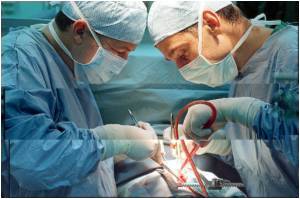Doctors have recommended open-heart surgery for pulmonary valve replacements until now.

Till date, four patients have received the landmark valve in the OHSU Paediatric and Adult Congenital Cardiac Catheterization Lab. All reported immediate improvement in their energy level and stamina.
The device is called the Medtronic Melody Transcatheter Pulmonary valve, which has been used in Europe since 2000 and was recently approved by the Food and Drug Administration.
The valve is used to replace a narrow or leaky pulmonary valve 'conduit' in children and adults who previously have undergone surgery to correct a congenital heart defect.
It is inserted into a tiny opening in the leg and guided by a catheter through blood vessels into the heart. Once the valve is correctly positioned, a balloon on the end of the catheter is inflated, delivering the valve and immediately correcting blood flow.
"Children born with blocked or leaky heart valves can undergo as many as four open-heart surgeries before reaching adulthood to replace conduits that have worn out or that they've outgrown, and each time the risk of surgery goes up," said Grant Burch, associate professor of paediatric cardiology at OHSU Doernbecher Children's Hospital.
Advertisement
"This device is not going to abolish the need for open-heart surgery, but it does provide a safe and effective alternative to surgery for many children and young adults with congenital heart disease," said Burch.
Advertisement
"This device brings us closer to the goal of providing children less invasive alternatives to surgery for the treatment of congenital heart disease," she added.
Source-ANI










